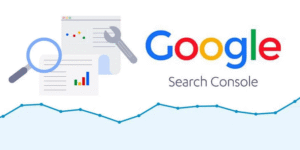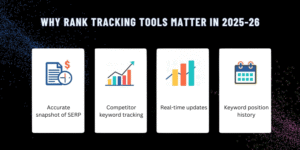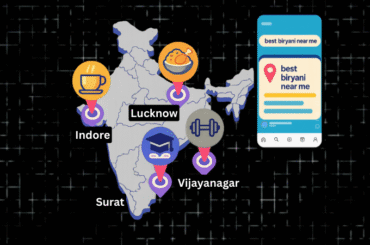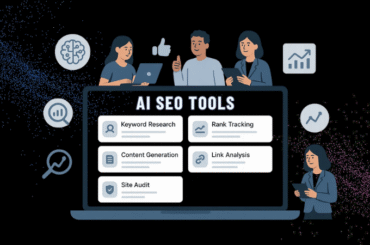The other day, my team asked a very important question: ‘Should we utilize Google Search Console or a rank-tracking tool for Google performance?’ I am sure you have also considered this question at some point while trying to determine which one provides the clearest picture of your SEO progress.
If you are just starting in SEO, think of rankings as the place where you get to set up shop on the main street. The closer to the top of the street, the more foot traffic you will receive from people strolling along. That’s why your position in search results is so important; it’s proof that your hard work at SEO is achieving some type of results.
However, there’s the additional spin – there are two different ways to establish where you stand. Using Google Search Console gives you one view, using rank-tracking tools another. Both are valuable perspectives, but each offers something useful in a distinct way. Let’s compare both to understand the difference between the two.

What is Google Search Console?
Google Search Console (GSC) is Google’s own free tool that helps you understand how your website shows up in search. With GSC, you can:
- See which keywords people are using to find you.
- Check if Google can read (crawl and index) your pages.
- Spot issues that might stop your site from ranking well.
- Understand how your pages are performing in search results.
- Even find out which other sites link back to you.
The best part? It’s completely free and made by Google itself. Whether you’re just starting with SEO or trying to fix problems on your site, GSC is one of the easiest tools to begin with.
How Google Search Console Keyword Ranking Benefit SEO?
Google Search Console displays the keywords that people enter into Google to find your site. It’s like being able to get inside your customer’s brain – you see the words they use, what they are looking for, and how often they appear.
Here’s how it aids in SEO:
- Find the right keywords – You’ll know what search terms are already bringing you visitors, so that you can focus on them.
- Spot growth opportunities – You may be ranking on page 2 for a keyword. With a bit of effort, you can move to page 1 and increase your traffic.
- Boost your content – If someone searches for “best budget shoes” and your page does not meet that intent, you can alter your content to fulfill that need.
- Track progress – Over time, you can see if your rankings are improving or declining; this is a direct indication of whether your SEO efforts are practical.
Overall, GSC keyword rankings are like a roadmap for your SEO journey. They show you where you are currently, and advise what to improve next.
Google Search Console Keyword Ranking vs. Ranking Tools
Tracking keyword rankings is key to understanding your SEO progress. But when it comes to choosing between Google Search Console and third-party rank tracking tools, the insights you get can be very different.
| Feature/Focus | Google Search Console (GSC) | Rank Tracking Tools (e.g., Semrush, Ahrefs, AccuRanker) |
| Cost | Free | Paid (subscription-based) |
| Data Source | Directly from Google | Third-party tools (simulate searches) |
| Accuracy | Shows average positions based on real user searches | Shows exact rankings for chosen keywords |
| Keyword Coverage | Only keywords where your site already appears in search results | Any keywords you want to track (even if you don’t rank yet) |
| Frequency of Updates | Daily updates | Depends on the tool – some update daily, some more often |
| Extra Insights | Crawl errors, indexing issues, backlinks, page experience, etc. | SERP features, competitor analysis, and local rank tracking |
| Best For | Beginners, checking overall site health + keyword performance | SEOs/marketers who need precise rank tracking + competition insights |
Here’s more:
Google Search Console
- Data Source: This is fresh data directly from Google, showing how real users are searching and interacting on your site.
- Data Lag: Rankings might take a few days to update; GSC data updates less frequently than third-party tools.
- Ranking Accuracy: The ‘average position’ is not a fixed spot; it is a general snapshot, and rankings can vary based on personalized results driven by device, location, and search history.
- Strengths: Great for tracking bigger performance trends, discovering keywords that you are already ranking for but haven’t been optimized for, and checking overall site health and technical SEO issues.
- Limitations: Not as accurate for tracking real-time and exact competitive ranking changes.

Third-Party Ranking Tools (e.g., SE Ranking, Ahrefs, Semrush)
- Data Source: These tools rely on their own proprietary algorithm and estimated data.
- Data Frequency: They update data much more regularly (often near real-time) compared to GSC.
- Ranking Accuracy: More accurate and consistent compared to other tools, and they are more similar to each other, providing a more current and precise snapshot of SERP positions for competitive keywords.
- Strengths: These tools are ideal for tracking rankings when precise positions of competitive keywords are required. They also provide a reference point for exact ranking positions and more reliable insight into where you rank.
- Limitations: As data is estimated and less reflective of user interactions as a whole, in comparison to GSC
How to Test The Capacity of GSC vs Ranking Tools
Here’s a simple experiment to understand GSC vs. Rank Tracking Tools:
1. Pick a keyword you know your site ranks for (e.g., ‘best digital marketing course’).
2. Check it in Google Search Console (GSC):
- Go to Performance → Search Results.
- Look at the Average Position for that keyword.
- Example: GSC shows your keyword at position 12.
3. Check it in a Rank Tracking Tool (like Ahrefs, Semrush, or Ubersuggest):
- Enter the same keyword.
- The tool might show your keyword at position 10.
Now compare:
Why different? GSC displays the average position across all users and devices, while rank trackers show a single snapshot of the exact ranking at that moment.
Result:
Both are correct — GSC gives the overall picture of how Google users see your site, and rank trackers give you the precise snapshot of where you stand right now.
Think of it like exam results:
- Google Search Console is like your overall report card — it shows your average score across all tests and subjects.
- Rank Tracking Tools are like checking your score in just one test on one day, exact, but not the whole picture.
When to Use GSC vs Ranking Tools
Use Google Search Console to:
- Evaluate the overall health and broader performance trends of your website.
- To find keywords you rank for that can be optimized to drive traffic.
- To understand how your website changes impact your keyword positions over time.
Use Third Party Tools to:
- Get pinpoint accurate real-time keyword rank tracking.
- Monitor rankings for competitive keywords.
- To get the most precise view of your individual SERP position regarding a given keyword.
Takeaway
Google Search Console and rank tracking tools aren’t competitors, rather they are partners. GSC Average Ranking gives you free, reliable insights straight from Google about how your site appears in search, while rank tracking tools give you a sharper, more detailed look at specific keywords and competitors.
If you’re starting with SEO, GSC is more than enough to learn what’s working. As you grow (or manage clients), adding a rank tracker helps you dive deeper and make data-driven decisions.






